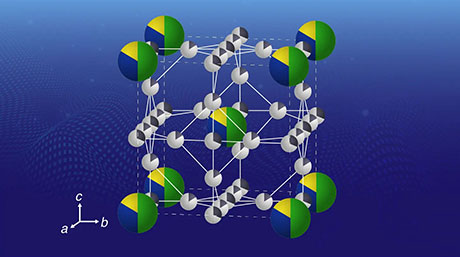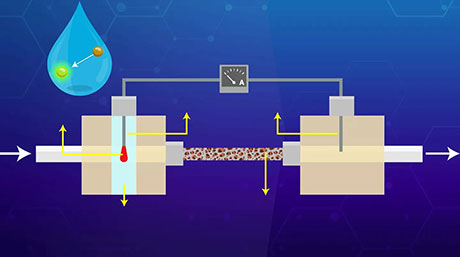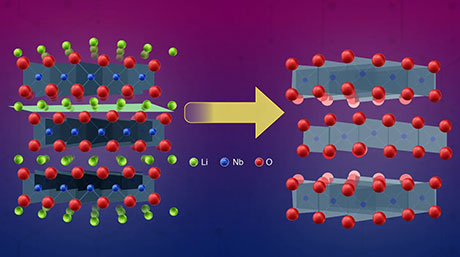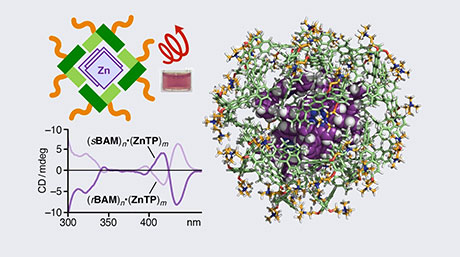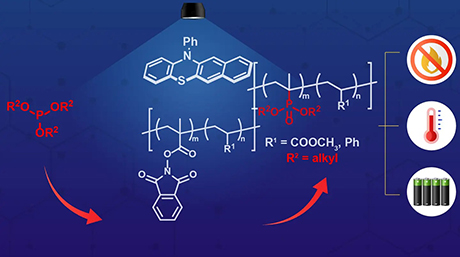Chemical Science and Engineering News
Exploring Ternary Metal Sulfides as Electrocatalyst for Carbon Dioxide Reduction Reactions
The empirical workflow developed using machine learning technique provides key design guidelines for uncharted family of materials
Novel workflow provides solid design guidelines for carbon dioxide (CO2) reduction electrocatalysts using ternary metal sulfide, report scientists from Tokyo Tech. By leveraging machine learning-based tools for elevating experimental data analysis, the proposed strategy helps researchers identify the trend of high electrocatalytic activity in uncharted material families. In turn, this could pave the way to more efficient CO2 reduction reactions, giving us an edge in our fight against global warming.
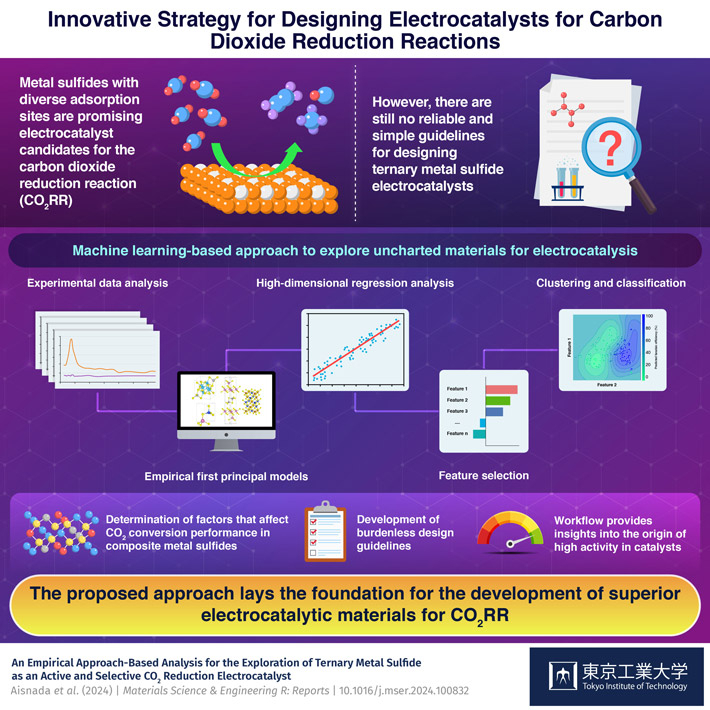
One of the most promising avenues for actively reducing CO2 levels in the atmosphere is recycling it into valuable chemicals via electrocatalytic CO2 reduction reactions. With a suitable electrocatalyst, this can be achieved under mild conditions and at a low energy cost. Many types of electrocatalysts are being actively investigated, but most suffer from either low electrocatalytic activity, poor selectivity, or low stability.
Metal sulfides might hold the huge potential solution to this puzzle. By combining ionic and covalent characteristics, this unique family of materials offers good catalytic activity and energy efficiency. The ternary metal system is expected to be a better solution since, according to recent studies, simple metal sulfides can still only yield a few simple carbon compounds in CO2 reduction reactions, thus lacking versatility. However, there is still a very low number of publications that discuss the functionality of ternary metal sulfide as a CO2 reduction electrocatalyst.
Against this backdrop, a research team led by Assistant Professor Akira Yamaguchi from Tokyo Institute of Technology, Japan, gave their effort to study the trend of ternary metal sulfide that has not been reported elsewhere . In their latest study, which was published in Materials Science & Engineering R: Reports, they combined experimental data analysis and machine learning to gain insights into this uncharted territory in materials science.
"Ternary metal sulfides may offer synergistic bi-metal effects that enhance CO2 reduction performance. However, these materials possess complex electronic structures, and it is difficult to employ their adsorption energy for intermediate compounds to analyze electrocatalyst performance trends of different metals and alloys," explains Yamaguchi.
To overcome these challenges, the researchers developed a novel screening methodology. Unlike previous screening methods, which often involve computationally expensive calculations of electrocatalyst adsorption energies, the researchers focused on analyzing more easily measurable and computable material properties derived from experiments and data analysis.
Using experimental data obtained from various measurements of their own synthesized metal sulfide samples, the researchers calculated a set of material properties representing structural, bulk, and surface parameters. They also measured the electrochemical CO2 reduction activity of the materials. Additionally, they used four different high-dimensional regression algorithms within the machine learning models to unveil possible relationships between material properties and electrocatalytic performance.
In this way, the researchers devised a streamlined workflow that can identify important parameters to explain the origin of high activity in electrocatalytic materials. One of the main findings of this study was that focusing on the crystal structure of ternary metal sulfides leads to better results than focusing solely on their elemental composition. "Our approach is less burdensome than other screening techniques and does not require high-throughput experimental tools. In addition, it is generalizable and applicable to many materials, making it particularly beneficial given the limited availability of material activity data for CO2 reduction reactions," explains Yamaguchi.
The research team hopes their efforts will lead to effective design guidelines for the development of CO2 conversion catalysts using materials that are ubiquitous in nature, and also the possible application of their guidelines to the other research field.
- Reference
| Authors : | An Niza El Aisnada1, Yuhki Yui2, Ji-Eun Lee3, Norio Kitadai4, Ryuhei Nakamura3,5, Masaya Ibe6, Masahiro Miyauchi1, and Akira Yamaguchi1,3,* |
|---|---|
| Title : | An Empirical Approach-Based Analysis for the Exploration of Ternary Metal Sulfide as an Active and Selective CO2 Reduction Electrocatalyst |
| Journal : | Materials Science & Engineering R: Reports |
| DOI : | 10.1016/j.mser.2024.100832 |
| Affiliations : |
1 Department of Materials Science and Engineering, Tokyo Institute of Technology, Japan 2 Carbon Neutral Development Division, Higashifuji Technical Center, Japan 3 Biofunctional Catalyst Research Team, RIKEN Center for Sustainable Resource Science, Japan 4 Institute for Extra-cutting-edge Science and Technology Avant-garde Research (X-star), Japan 5 Earth-Life Science Institute, Tokyo Institute of Technology, Japan 6 Advanced Material Engineering Division, Higashifuji Technical Center, Japan |
|
* Corresponding author's email: ayamaguchi@ceram.titech.ac.jp |
|
- Towards A Better Way of Releasing Hydrogen Stored in Hydrogen Boride Sheets | Tokyo Tech News
- Discovering the Unexplored: Synthesis and Analysis of a New Orthorhombic Sn3O4 Polymorph | Tokyo Tech News
- Scientists Develop Indoor-active Photocatalyst for Antiviral Coating Against Various Variant Types of Novel Coronavirus SARS-CoV-2 | Tokyo Tech News
- Study discovers process that may have produced first organic molecules for life on Earth | Tokyo Tech News
- Ecofriendly catalyst for converting methane into useful gases using light instead of heat | Tokyo Tech News
- Hydrogen boride nanosheets: A promising material for hydrogen carrier | Tokyo Tech News
- Electricity-Driven Undersea Reactions May have Been Important for the Emergence of Life | Tokyo Tech News
- 2023 ASUNARO Grant awarded to 5 researchers | Tokyo Tech News
- Akira Yamaguchi | Researcher Finder - Tokyo Tech STAR Search
- Masahiro Miyauchi | Researcher Finder - Tokyo Tech STAR Search
- Ryuhei Nakamura | Researcher Finder - Tokyo Tech STAR Search
- Miyauchi and Yamaguchi Laboratory
- Nakamura Laboratory
- Department of Materials Science and Engineering, School of Materials and Chemical Technology
- Earth-Life Science Institute (ELSI)
- Earth-Life Science Graduate Major|Education|Department of Chemical Science and Engineering, School of Materials and Chemical Technology
- Chemical Science and Engineering Graduate Major Major|Education|Department of Chemical Science and Engineering, School of Materials and Chemical Technology
- Chemical Science and Engineering Undergraduate Major|Education|Department of Chemical Science and Engineering, School of Materials and Chemical Technology
- RIKEN
- Japan Agency of Marine-Earth Science and Technology (JAMSTEC)
- Latest Research News
School of Materials and Chemical Technology
—Encompassing the Disciplines of Science—
Information on School of Materials and Chemical Technology inaugurated in April 2016
Further Information
Assistant Professor Akira Yamaguchi
School of Materials and Chemical Technology, Tokyo Institute of Technology

